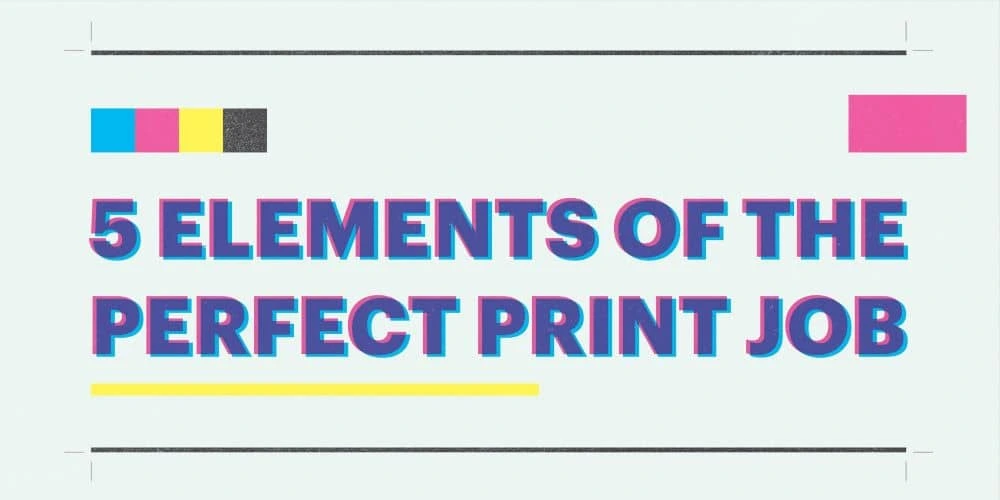In the age of nearly free digital marketing resources, any funds spent on print advertising should be allocated with care. In other words, there is no reason to settle for a second-rate print job when you can achieve print perfection.
Related: Why print will never die: Print vs. digital collateral
When you ensure each of these 5 elements are handled with precise attention to detail, the result will be a perfect print job you can distribute with pride.
Let’s get started!
Color consistency
One of the most difficult elements of print production to perfect is color matching. You will pay more for 4-color CMYK (cyan, magenta, yellow, key/black) printing than you will for black-and-white, so you should expect your completed color print job to mirror the exact colors of your brand, logo and ad design.
The best way to ensure an identical color match is to use the Pantone matching system (PMS for short). You can use Pantone swatches in two ways: for spot color printing or by inputting the RGB and HTML Pantone swatch numbers to color-match an on-screen design.
Paper type
The type of paper you choose for a print job will influence the success of the end result. No two paper samples are alike, and everything from the “whiteness” of the white to the texture to the weight can affect how your print job comes out.
Some papers produce a cleaner fold than others. Certain papers types are longer-lasting, while others hold accurate colors better. Heavier weight papers can convey a more luxurious, opulent message. The brightness and type of finish (matte, gloss, etc.) may make the message easier or more challenging to read.
For business card printing, consider using a UV coating that applies a clear-coat to the paper to help protect it against damages from frequent handling.
For products that will be left outdoors, use a more durable material than paper. Coroplast, a lightweight plastic board, is frequently used for a-frame printing because it can withstand all weather types.
Formatting
Formatting refers to whether or not your print job is delivered to the printer in a format that will perfectly translate at print time. In short, you want to be sure your designer delivers a “print-ready” file in PDF format that is at least 300 dpi with trim, crop and bleed marks noted. Also, the print ready file should adhere to any specific requirements of the printer type you will be using.
Without the correct file formatting, and a test print to confirm all looks as it should, you run a high risk of having to redo your job. Formatting is what ensures the design you want is the design you get at print time.
Layout
For any print job, you probably know from the start what information the finished piece must contain. Some common must-haves: website URL, contact information, company name & logo, and descriptions of products or services.
The word “layout” refers to where and how these required items are placed, as well as what space is left for items that may come later (such as a customer mailing address or postal meter stamp). Scrutinizing the layout for font size and readability, visual impact, clarity and orientation (portrait or landscape) is key for ensuring the end print job is suited to your needs.
Printing partner
Finally, your completed print job is likely to be only as good as the printing partner you choose to work with. You want to select a printing partner that can provide either an electronic or hard copy test proof for your approval.
Search for a printing partner who isn’t satisfied until you are, who has clear policies about when a re-print can be requested. Finally, you want to select a printing partner with an excellent reputation for delivering quality print results.
Translating an artistic vision from mind to screen to paper can be difficult, but with all 5 of these elements securely in place, you will see a tremendous difference in your printed materials.



